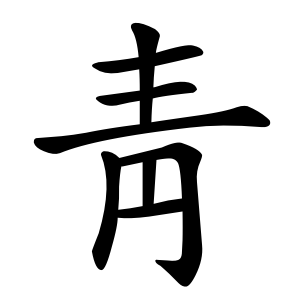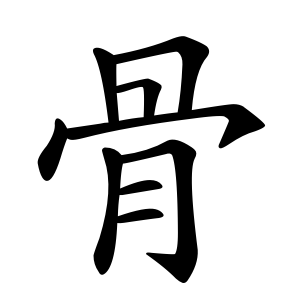This article needs additional citations for verification .(August 2022) |
The development of Singapore's Chinese characters can be divided into three periods.
This article needs additional citations for verification .(August 2022) |
The development of Singapore's Chinese characters can be divided into three periods.
Before 1969, Singapore used traditional Chinese characters. From 1969, the Ministry of Education promulgated the Table of Simplified Characters (simplified Chinese :简体字表; traditional Chinese :簡體字表; pinyin :jiǎntǐzì biǎo), which differed from the Chinese Character Simplification Scheme of the China. [1] After 1976, Singapore fully adopted the simplified Chinese characters of the People's Republic of China. In 1977, the second attempt to simplify the characters was stopped, ending the long period of confusion associated with simplification.
The 1969 Table of Simplified Characters was also known as the "502 Table of Simplified Characters" or simply "502". This table listed a total of 502 commonly used Simplified Characters. It contains 11 characters unique to Singapore, 38 characters simplified in different ways compared to that of mainland China, and 29 characters whose left or right radical were not simplified. [2]
Simplification examples are as follows:
Different ways of simplification as compared to those of mainland China
Radicals which are not simplified:
Simplified Chinese characters are one of two standardized character sets widely used to write the Chinese language, with the other being traditional characters. Their mass standardization during the 20th century was part of an initiative by the People's Republic of China (PRC) to promote literacy, and their use in ordinary circumstances on the mainland has been encouraged by the Chinese government since the 1950s. They are the official forms used in mainland China and Singapore, while traditional characters are officially used in Hong Kong, Macau, and Taiwan.
Traditional Chinese characters are a standard set of Chinese character forms used to write Chinese languages. In Taiwan, the set of traditional characters is regulated by the Ministry of Education and standardized in the Standard Form of National Characters. These forms were predominant in written Chinese until the middle of the 20th century, when various countries that use Chinese characters began standardizing simplified sets of characters, often with characters that existed before as well-known variants of the predominant forms.
Shinjitai are the simplified forms of kanji used in Japan since the promulgation of the Tōyō Kanji List in 1946. Some of the new forms found in shinjitai are also found in simplified Chinese characters, but shinjitai is generally not as extensive in the scope of its modification.

The debate on traditional Chinese characters and simplified Chinese characters is an ongoing dispute concerning Chinese orthography among users of Chinese characters. It has stirred up heated responses from supporters of both sides in mainland China, Hong Kong, Macau, Taiwan, and among overseas Chinese communities with its implications of political ideology and cultural identity. Simplified characters here exclusively refer to those characters simplified by the People's Republic of China (PRC), instead of the concept of character simplification as a whole. The effect of simplified characters on the language remains controversial, decades after their introduction.
Singaporean Mandarin is a variety of Mandarin Chinese spoken natively in Singapore. Mandarin is one of the four official languages of Singapore along with English, Malay and Tamil.

Radical 140 or radical grass (艸部) meaning "grass" is one of 29 of the 214 Kangxi radicals that are composed of 6 strokes. It transforms into 艹 when appearing at the top of a character or component. In the Kangxi Dictionary and in modern standard Traditional Chinese as used in Taiwan, Hong Kong and Macau, 艹 consists of four strokes, while in Simplified Chinese and modern Japanese, 艹 consists of three strokes.

Radical 38 or radical woman (女部) meaning "woman" or "female" is one of the 31 Kangxi radicals composed of three strokes.

Radical 98, also known as the radical tile (瓦部) meaning "tile" is one of the 23 Kangxi radicals and is composed of 5 strokes.

Radical 130 or radical meat (肉部) meaning "meat" is one of the 29 Kangxi radicals composed of 6 strokes. When used as a left component, the radical character transforms into 月 in Simplified Chinese and Japanese or ⺼ in modern Traditional Chinese used in Hong Kong and Taiwan.
The Table of Indexing Chinese Character Components is a lexicographic tool used to order the Chinese characters in mainland China. The specification is also known as GF 0011-2009.

Radical 173 or radical rain (雨部) meaning "rain" is one of the 9 Kangxi radicals composed of 8 strokes. This radical character transforms into ⻗ when used as an upper component.

Radical 174 or radical blue (靑部/青部) meaning "blue" or "green" or "black" is one of the 9 Kangxi radicals composed of 8 strokes. It is also the character representing the color ao in Japanese, a general term covering both blue and green.

Radical 175 or radical wrong (非部) meaning "wrong" is one of the 9 Kangxi radicals composed of 8 strokes.

Radical 188 or radical bone (骨部) meaning "bone" is one of the 8 Kangxi radicals composed of 10 strokes.
Modern Chinese characters are the Chinese characters used in modern languages, including Chinese, Japanese, Korean and Vietnamese. Chinese characters are composed of components, which are in turn composed of strokes. The 100 most frequently-used characters cover over 40% of modern Chinese texts. The 1000 most frequently-used characters cover approximately 90% of the texts. There are a variety of novel aspects of modern Chinese characters, including that of orthography, phonology, and semantics, as well as matters of collation and organization and statistical analysis, computer processing, and pedagogy.
Stroke number, or stroke count, is the number of strokes of a Chinese character. It may also refer to the number of different strokes in a Chinese character set. Stroke number plays an important role in Chinese character sorting, teaching and computer information processing.
A Chinese character set is a group of Chinese characters. Since the size of a set is the number of elements in it, an introduction to Chinese character sets will also introduce the Chinese character numbers in them.
The Table of Comparison between Standard, Traditional and Variant Chinese Characters is the new standard of the PRC on the relationship between simplified, traditional and variant Chinese characters. It includes all the characters in the Table of General Standard Chinese Characters which have different forms in traditional or variant writing. The comparison table was built by integrating the General List of Simplified Chinese Characters and the First List of Processed Variant Chinese Characters.